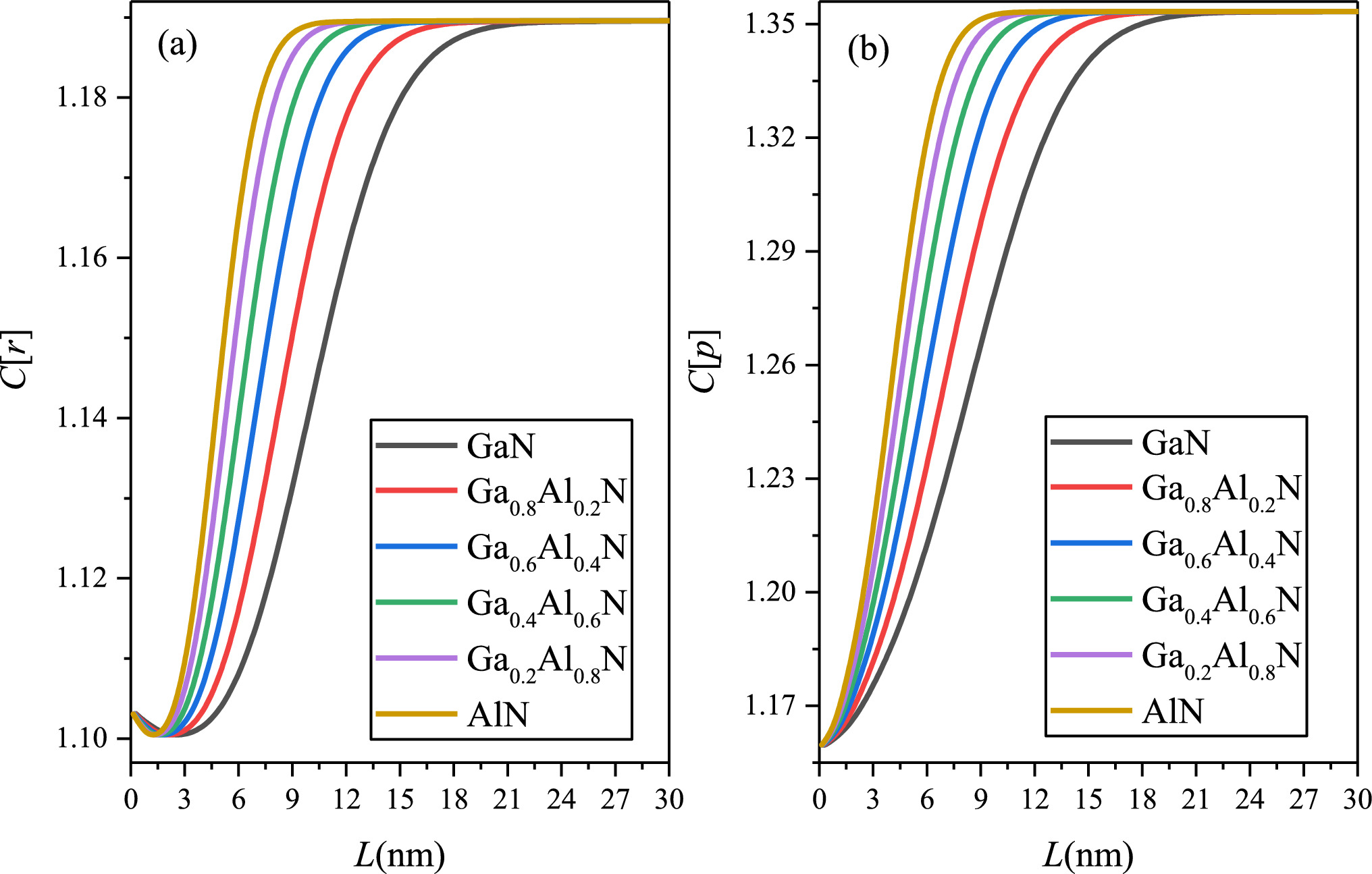https://doi.org/10.1140/epjd/s10053-023-00790-7
Regular Article - Quantum Information
The shape complexity of hydrogenic impurity state in the Ga1 − χAlχN semiconductor quantum well
School of Physics and Optoelectronic Engineering, Ludong University, 264025, Yantai, China
Received:
3
September
2023
Accepted:
10
December
2023
Published online:
15
January
2024
This study investigates the shape complexity of hydrogenic impurity states in the Ga1 − χAlχN semiconductor quantum well for the first time. The shape complexity is calculated for a specific hydrogenic impurity state in both position and momentum spaces (C[r] and C[p]) through the utilization of Shannon entropy and averaging electron probability density. The results demonstrate that the Shannon entropy and the average electron probability density vary monotonically with the quantum well width. However, the shape complexity exhibits extreme points, and their physical source is discussed in detail. Furthermore, the impact of doping Al element on the shape complexity of the hydrogenic impurity in the Ga1 − χAlχN quantum well is examined. The investigation demonstrates that the changes in C[r] or C[p] with the quantum well width exhibit similarity for different contents of the doping Al element, indicating a scaled invariance of shape complexity under translation. However, for a fixed width of the quantum well, the shape complexity of hydrogenic impurity state in the Ga1 − χAlχN quantum well is highly sensitively to the Al element content. As the shape complexity plays a crucial role in quantifying the disorder of a quantum system, our findings indicate that we can control the internal disorder of hydrogenic impurity in the semiconductor quantum well by adjusting the well size and doping element content. Our study provides some theoretical guidance for the study of the internal disorder of hydrogenic impurity in semiconductor quantum well and has certain applications in semiconductor material manufacturing and synthesis.
Copyright comment Springer Nature or its licensor (e.g. a society or other partner) holds exclusive rights to this article under a publishing agreement with the author(s) or other rightsholder(s); author self-archiving of the accepted manuscript version of this article is solely governed by the terms of such publishing agreement and applicable law.
© The Author(s), under exclusive licence to EDP Sciences, SIF and Springer-Verlag GmbH Germany, part of Springer Nature 2024. Springer Nature or its licensor (e.g. a society or other partner) holds exclusive rights to this article under a publishing agreement with the author(s) or other rightsholder(s); author self-archiving of the accepted manuscript version of this article is solely governed by the terms of such publishing agreement and applicable law.





